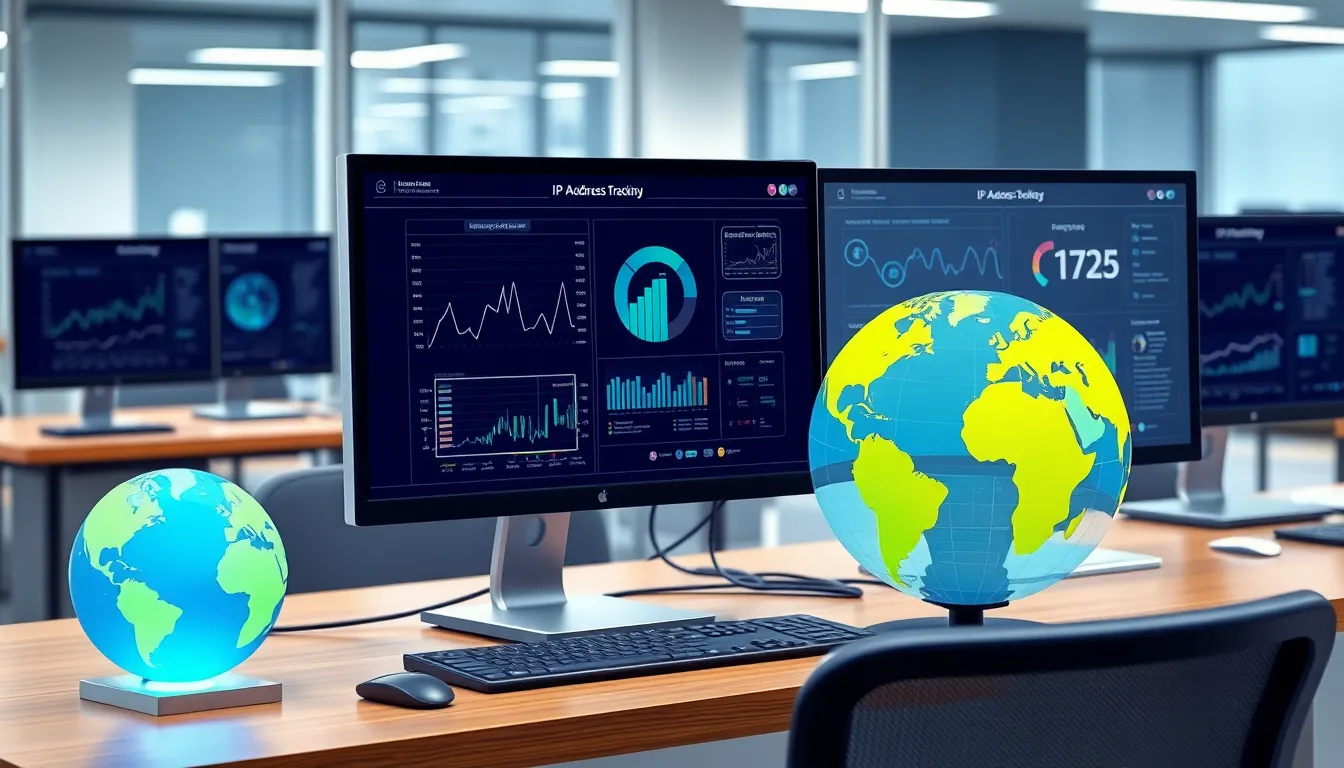Ever wondered what secrets lie behind the mysterious numbers of an IP address? Meet 202.131.126.216, a digital enigma that’s as intriguing as it is essential. This unassuming string of digits is more than just a random collection; it’s a gateway into the world of online connectivity and digital footprints.
Table of Contents
ToggleOverview of 202.131.126.216
202.131.126.216 serves as a unique identifier for devices on the internet. Data associated with this IP address indicates it operates within a public network. Typically, this address belongs to the range allocated to specific organizations or internet service providers (ISPs).
Geo-location services reveal a general area for 202.131.126.216. This location data assists in understanding where the connection originates. Monitoring tools can analyze traffic patterns linked to this IP address, providing insights into usage trends.
Security implications surround 202.131.126.216. Attackers may exploit IP addresses for malicious purposes, such as launching distributed denial-of-service (DDoS) attacks. Users should remain vigilant regarding activities from unfamiliar IP addresses to avoid potential threats.
Ownership details point to the ISP associated with 202.131.126.216. These details enable users to contact the provider for additional information or report suspicious activity tied to the address. Various online tools can display this information, allowing users to investigate further.
Understanding the significance of 202.131.126.216 emphasizes the importance of IP addresses in the digital realm. Internet connectivity and data exchange largely rely on this system of numerical identifiers. Researchers and professionals analyze IP data to derive trends and improve cybersecurity measures across networks.
History of 202.131.126.216

The IP address 202.131.126.216 possesses a notable history that reflects changes in internet infrastructure and security practices.
Key Milestones
In its timeline, 202.131.126.216 experienced significant milestones linked to internet governance. The address originally received an allocation from the Asia-Pacific Network Information Centre (APNIC), promoting its role in network connectivity. Various updates occurred, influencing its assignment among different organizations. Enhanced DNS management started in the early 2000s, optimizing the address’s functionality. Furthermore, security protocols evolved, addressing misuse and improving data protection measures for users and associated networks.
Ownership Changes
Ownership changes have also characterized 202.131.126.216 over time. Organizations frequently acquired the IP address as part of their network expansions. Initial assignments often went to smaller ISPs, but larger telecommunications companies later took over. As a result, the current holder of the IP address can be traced through databases like WHOIS, which provide details about registration and ownership history. Keeping track of these changes aids in identifying potential security threats and accountability in case of malicious activities associated with the address.
Technical Specifications
The technical specifications of the IP address 202.131.126.216 provide insight into its operational framework and geographic implications.
IP Address Format
IP addresses consist of a numerical format defined by a four-octet structure. Each octet represents a decimal number ranging from 0 to 255. Notably, 202.131.126.216 illustrates this standard, with each component separated by periods. This format facilitates easy identification and routing of data packets across networks. It is critical to understand that variations exist, such as IPv4 and IPv6, but IPv4 remains the predominant format for most devices today. Security protocols often interact with these addresses, influencing how data is managed and protected.
Geographic Location
Geo-location services determine the physical location associated with 202.131.126.216. These services analyze data from databases that map IP addresses to geographic regions. It allows users to approximate the origin of the address, typically identifying a city or region rather than precise coordinates. In this case, the IP address likely traces back to specific countries within the Asia-Pacific region due to its assignment by APNIC. Identifying its geographic location aids in analyzing traffic patterns and enhancing cybersecurity strategies. This information can prove beneficial for organizations monitoring activity linked to this IP address.
Uses and Applications
The IP address 202.131.126.216 finds various applications in the digital landscape, influencing connectivity and data exchange.
Common Usage Scenarios
Web surfing often involves users accessing sites linked to the IP address. Online services frequently utilize this IP for resource allocation, enhancing the user experience for visitors in specific regions. Customer support platforms may identify requests through this address, allowing for tailored assistance based on geographical data. Additionally, security systems analyze IP traffic patterns to spot anomalies, safeguarding networks from potential threats.
Industry Impact
Telecommunications companies leverage 202.131.126.216 to manage data flow across the internet. Organizations within the cybersecurity sector monitor this IP to anticipate and mitigate threats, reinforcing overall network security. Data analytics firms exploit insights derived from this address to improve service delivery and performance optimization. Businesses also utilize geo-location information from the IP to target marketing efforts, enhancing customer engagement by tailoring messages to local audiences.
Security Assessment
Understanding the security aspects of 202.131.126.216 is crucial for safeguarding networks. IP addresses can expose vulnerabilities that attackers easily exploit.
Vulnerabilities
Cybercriminals often target 202.131.126.216 due to its public nature. DDoS attacks may disrupt services connected to this IP address. Phishing attempts can arise through emails pretending to originate from this address. Additionally, unpatched devices linked to it might become entry points for further intrusions. Exposure of personal data becomes a significant risk when security measures falter. Continuous monitoring helps identify unusual traffic patterns, indicating potential threats.
Mitigation Strategies
Organizations can implement robust firewalls to enhance protection around 202.131.126.216. Regular software updates ensure devices remain secure against known exploits. Using intrusion detection systems allows for early identification of malicious activities. Setting up VPNs encrypts connections, providing an extra layer of security. Furthermore, conducting periodic security audits helps in recognizing and addressing vulnerabilities. Employing strong access controls limits exposure and reduces risks associated with unauthorized access.
Understanding the nuances of 202.131.126.216 highlights its critical role in the digital landscape. This IP address isn’t just a series of numbers; it’s a gateway to connectivity and security. As organizations navigate the complexities of online interactions, the significance of monitoring and managing IP addresses like 202.131.126.216 becomes increasingly vital.
With the potential for misuse and the need for robust cybersecurity measures, staying informed about such addresses empowers users and businesses alike. By implementing best practices and leveraging geo-location insights, they can enhance both security and user experience. The journey of 202.131.126.216 serves as a reminder of the intricate web that connects the digital world.








